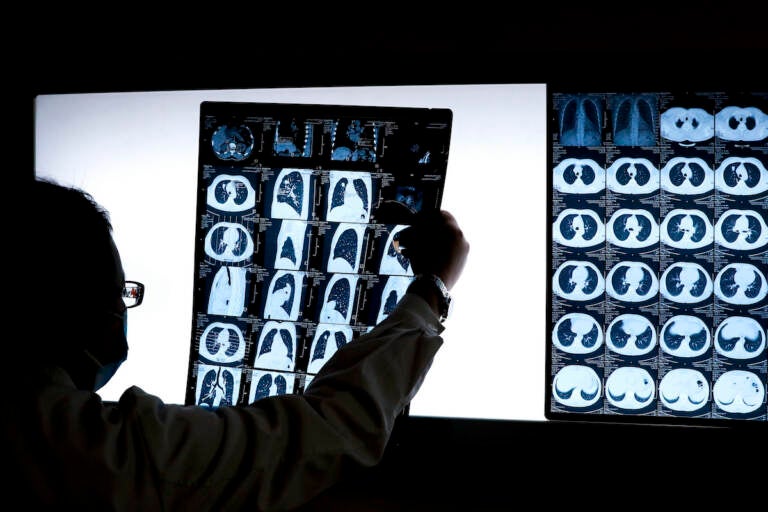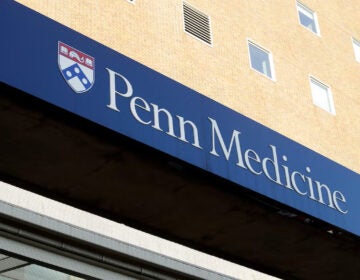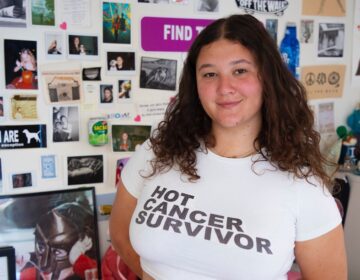Physicians urge preventative screenings this Lung Cancer Awareness Month
Lung cancer kills more people in the U.S. each year than colon, breast or prostate cancer combined. Screening can catch it while it’s treatable.

In this Thursday, Dec. 8, 2016 photo, Chinese doctor Peng Limei looks at a CT scan of a lung cancer patient at the Jingdong Zhongmei private hospital in Yanjiao, China's Hebei Province. (AP Photo/Andy Wong)
Lung cancer is the leading cancer killer of men and women in the United States, and more patients die from it each year than from colon, breast or prostate cancer combined.
Experts in the region hope to change those grim statistics — and see lung cancer become more treatable, and less lethal.
Dr. Gerard Criner, chair and professor of thoracic surgery and medicine at Temple University’s Lewis Katz School of Medicine, said early detection is key.
“Over the last several years, the death rate for lung cancer has declined, but it still remains enormously high,” Criner said. “Screening is one of the ways that we can significantly impact the high-level morbidity and mortality, by catching it at an earlier stage.”
The screening itself has some risks, such as false positives that may lead to unnecessary additional screens or even surgery. But overall, experts say, the benefits outweigh the drawbacks.
Screenings are especially important because lung cancer is typically detected at a late stage, when treatment is less likely to cure, said Deborah Brown, chief mission officer for the American Lung Association. That relates to a low chance of survival. Symptoms such as persistent cough, shortness of breath, or pain tend to show up in the later stages of illness. If patients are screened for lung cancer prior to experiencing symptoms, their chance of death from lung cancer decreases by 14% to 20%. And if lung cancer is caught very early, before it spreads, the chances of surviving five years or more increases by 60%.
This year, a federal task force changed the guidelines on who should be screened for lung cancer, to include more people and start at a younger age.
“And that means that there will be more individuals, particularly women and Black Americans, who will be eligible for screening,” said Criner.
The new guidelines label as high risk those patients who are 50 to 80 years of age, have a 20 pack-year history of smoking, and have either quit within the last 15 years or still smoke. Pack-years take into consideration how long and how much a person smoked. One pack-year equals 20 cigarettes per day for one year. If somebody smoked 10 cigarettes a day for 10 years, that would be five pack-years.
Brown said screening for lung cancer entails a low-dose CT scan, which uses a series of computerized images that are taken from different angles to create a detailed picture of a person’s lungs.
“And by using an annual screening test for at least three years up to five years, they’ve shown a reduction in mortality,” said Criner.
Yet only 8% of high-risk individuals in Pennsylvania are screened for cancer, said Brown.
One reason for the low numbers is the stigma that surrounds lung cancer. With its strong link to smoking, some may feel that they caused their own cancer and don’t deserve to be treated. Many people are still not aware that lung screening exists, or they don’t have access. That is something advocates hope will change as more people hear about screening as a tool for early detection and who is eligible.
Physicians say people who are concerned about their risk factors — like smoking, being exposed to secondhand smoke, or high-levels of air pollution, should discuss lung screening with their physicians.
WHYY is your source for fact-based, in-depth journalism and information. As a nonprofit organization, we rely on financial support from readers like you. Please give today.






